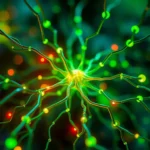Now Reading: Powerful AI in Healthcare Diagnostics: Boosting Patient Care
-
01
Powerful AI in Healthcare Diagnostics: Boosting Patient Care
Powerful AI in Healthcare Diagnostics: Boosting Patient Care

Powerful AI in Healthcare Diagnostics: Boosting Patient Care
The integration of AI in healthcare diagnostics has become a game-changer in the medical field. With its ability to deliver rapid, accurate results, AI is revolutionizing how healthcare professionals approach patient care and disease detection. This article explores the transformative impact of AI in healthcare diagnostics, discussing its benefits, challenges, and future potential.
Understanding AI in Healthcare
AI in healthcare diagnostics leverages advanced algorithms and machine learning techniques to interpret complex medical data. By analyzing vast datasets, AI systems assist in identifying patterns that human eyes might miss. This innovative approach not only speeds up the diagnostic process but also significantly enhances accuracy. Several healthcare facilities worldwide have integrated AI-driven systems to optimize treatment planning and improve patient outcomes.
Benefits of AI in Healthcare Diagnostics
- Enhanced Diagnostic Accuracy: AI technologies reduce human error by providing a second opinion, ensuring that potential issues are correctly identified early on.
- Faster Results: Advanced systems process data at incredible speeds, enabling quicker diagnosis and timely intervention.
- Cost Reduction: By streamlining the diagnostic process, AI helps lower operational costs for hospitals and clinics.
- Personalized Treatment Plans: AI supports precision medicine by tailoring treatment options based on individual patient data.
These benefits have led to increased interest in how AI improves diagnostic accuracy, making it a focal point for modern healthcare innovations.
How AI Improves Diagnostic Accuracy
A key advantage of AI in healthcare diagnostics is its ability to analyze medical imaging with high precision. Through machine learning, systems are trained to detect subtle anomalies that may indicate early stages of diseases such as cancer, cardiovascular disorders, and neurological conditions. Here are several ways in which AI improves diagnostic accuracy:
- Pattern Recognition: AI algorithms are designed to detect intricate patterns within imaging data. These patterns help in early diagnosis, which is critical for effective treatment.
- Data Integration: AI integrates patient data from various sources, including electronic health records and lab results, forming a complete picture of a patient’s health profile.
- Continual Learning: With every case processed, AI systems learn and improve. This iterative learning process refines the system’s accuracy over time.
- Real-time Analysis: AI offers the ability to analyze data in real time, empowering healthcare providers to make informed decisions during patient consultations.
The question of how AI improves diagnostic accuracy is answered by these technological advancements, bringing nuance and precision to the diagnostic process. For more details on AI advancements, you can visit the official website of OpenAI, which is pioneering AI research across various sectors.
AI in Medical Imaging and Disease Prediction
Medical imaging is one of the most critical areas where AI in healthcare diagnostics excels. Technologies such as MRI, CT scans, and ultrasound imaging generate vast amounts of data that require expert analysis. AI systems process these images to identify early signs of pathology and predict potential disease outcomes. For instance, AI disease prediction models integrate imaging data with patient histories to forecast the likelihood of conditions like stroke or heart disease.
Moreover, AI-powered tools assist radiologists by highlighting regions of interest and suggesting potential diagnoses. This collaboration between human expertise and machine precision is creating a new era in medical imaging. As these systems become more sophisticated, the reliance on manual interpretation diminishes, leading to more reliable and consistent results.
Challenges and Future of AI in Healthcare Diagnostics
Despite the promising benefits, there are challenges in the adoption of AI in healthcare diagnostics. Key challenges include data privacy concerns, the need for extensive training datasets, and regulatory hurdles. Healthcare organizations must ensure that patient data is handled with strict confidentiality and that AI systems adhere to all regulatory standards.
In addition, integrating AI into existing healthcare infrastructures requires significant investment in technology and personnel training. However, the future of AI in healthcare diagnostics is bright. As research continues and systems evolve, we expect more refined algorithms, broader adoption, and even greater enhancements in diagnostic precision.
Key Considerations for Implementation
- Regulatory Compliance: Ensuring all AI systems meet healthcare standards is crucial for widespread adoption.
- Data Quality: High-quality, comprehensive datasets are essential for training effective AI models.
- Continuous Improvement: Stakeholders must invest in ongoing research to adapt AI tools to emerging medical trends.
Conclusion
In conclusion, AI in healthcare diagnostics is reshaping the landscape of patient care with its rapid data processing, enhanced accuracy, and efficiency. This technology not only improves diagnostic accuracy but also streamlines medical imaging and disease prediction. As healthcare providers continue to integrate these advanced systems, the result will be faster diagnoses, personalized treatment plans, and ultimately, improved patient outcomes.
Adopting AI in healthcare diagnostics is not just a trend but a necessary evolution towards more sophisticated, data-driven medical care. By tackling challenges such as data privacy and regulatory compliance, the healthcare industry is poised to reap the benefits of AI technology in the near future. With continued innovation and integration, the promise of AI in healthcare diagnostics heralds a new era of medical excellence, transforming practices and setting new standards for patient care.

























